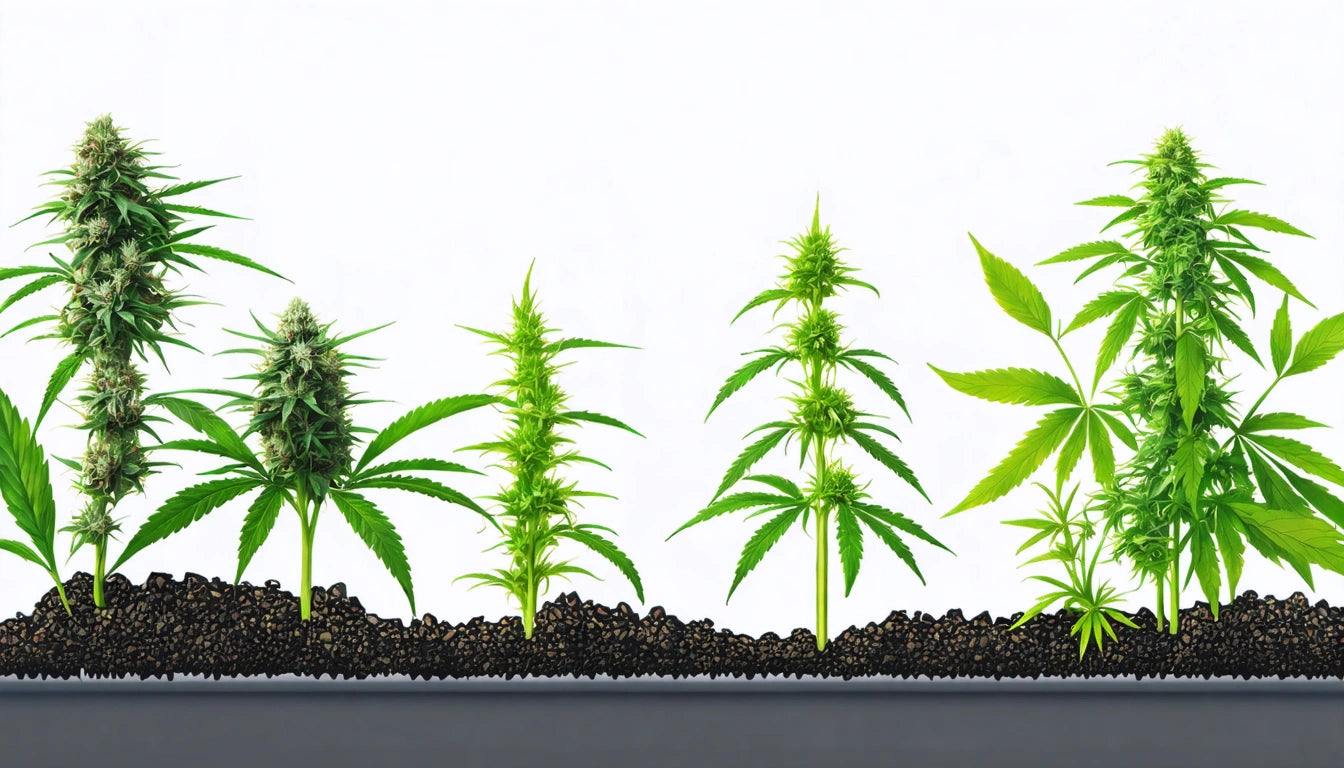The Ultimate Guide to Choosing the Best Fertilizer for Cannabis Growth
Selecting the best fertilizer for cannabis plants can dramatically impact yield, potency, and overall plant health. Cannabis has specific nutritional requirements that change throughout its growth cycle, making fertilizer selection a critical decision for cultivators. This comprehensive guide explores the most effective fertilizers for marijuana plants, helping you navigate the complex world of cannabis nutrition.
Understanding Cannabis Nutrient Needs
Cannabis requires a balance of macronutrients and micronutrients to thrive. The three primary macronutrients, represented in NPK ratios on fertilizer packaging, include:
- Nitrogen (N): Essential for vegetative growth and leaf development
- Phosphorus (P): Critical for root development and flowering
- Potassium (K): Supports overall plant health and disease resistance
Beyond NPK, cannabis also needs secondary nutrients like calcium, magnesium, and sulfur, plus micronutrients including iron, manganese, zinc, and copper. The optimal nutrient profile varies depending on the growth stage, with higher nitrogen demands during vegetation and increased phosphorus requirements during flowering.
Best Organic Fertilizers for Cannabis
Many cultivators prefer organic fertilizers for their sustainable profile and ability to enhance terpene production. The best organic fertilizer for cannabis options include:
Compost and Worm Castings
Rich in beneficial microorganisms, these improve soil structure and provide slow-release nutrients. Worm castings are particularly valuable for their balanced nutrient profile and microbial activity.
Bat Guano
High in phosphorus, bat guano is considered one of the best fertilizers for flowering cannabis, enhancing bud development and resin production.
Fish Emulsion
An excellent nitrogen source during the vegetative stage, fish emulsion provides readily available nutrients that cannabis plants can quickly absorb.
Bone Meal
Rich in phosphorus and calcium, bone meal supports strong root development and flowering, making it ideal for the transition to bloom.
Synthetic Fertilizers for Maximum Yields
For growers seeking precise control and maximum yields, synthetic fertilizers offer advantages:
Liquid Nutrients
These provide immediate availability and precise dosing. Many commercial cannabis-specific nutrient lines offer the best liquid fertilizer for cannabis with carefully formulated ratios for each growth stage.
Slow-Release Granules
These reduce the frequency of fertilization while providing consistent nutrition. Many growers using specialized storage solutions for their harvested product often begin with controlled-release fertilizers to ensure consistent quality throughout the growth cycle.
Hydroponic Solutions
Complete nutrient systems for soilless growing provide precise control over every aspect of plant nutrition.
Stage-Specific Fertilization Strategies
The best fertilizer for cannabis plants varies by growth stage:
Seedling Stage
Minimal fertilization is required. A light, balanced formula or none at all is recommended, as seedlings are sensitive to nutrient burn.
Vegetative Stage
The best fertilizer for cannabis vegetative stage is nitrogen-rich. Look for NPK ratios like 3-1-1 or 4-2-3 to promote healthy leaf and stem development.
Flowering Stage
The best fertilizer for budding cannabis shifts to phosphorus-dominant formulas. NPK ratios like 1-3-2 or 0-5-4 support bud development and resin production. Many growers consider specialized bloom boosters to be the best bud fertilizer for maximizing yields.
For more detailed information on stage-specific needs, consult this comprehensive fertilizer guide.
NPK Ratios Explained
Understanding NPK ratios is crucial for selecting the best NPK fertilizer for marijuana plants:
- Vegetative growth: Higher N (e.g., 3-1-1, 4-2-3)
- Early flowering: Balanced NPK (e.g., 2-2-2, 1-1-1)
- Mid to late flowering: Higher P and K (e.g., 1-3-2, 0-5-4)
The best NPK fertilizer for marijuana will change throughout the plant's lifecycle, requiring growers to adjust their feeding regimen accordingly.
Application Methods and Schedules
Proper application ensures optimal nutrient uptake:
Soil Drenching
Apply diluted liquid fertilizer during watering, following manufacturer guidelines for concentration.
Foliar Feeding
Spray diluted nutrients directly onto leaves for quick absorption, particularly effective for addressing deficiencies.
Top Dressing
Apply dry amendments to the soil surface and water in, ideal for slow-release organic fertilizers.
Frequency varies by growth stage and fertilizer type. Generally, feed at half-strength every other watering during vegetation and reduce nitrogen while increasing phosphorus during flowering.
Troubleshooting Nutrient Issues
Even with the best fertilizer for marijuana plants, problems can arise:
Nutrient Burn
Characterized by yellow/brown leaf tips, this indicates overfertilization. Flush the growing medium with plain water and reduce fertilizer strength.
Deficiencies
Yellow leaves (nitrogen), purple stems (phosphorus), or brown leaf edges (potassium) signal specific nutrient lacks. Adjust your feeding program accordingly with targeted supplements.
pH Imbalance
Improper pH can lock out nutrients despite adequate fertilization. Maintain 6.0-6.5 for soil and 5.5-6.0 for hydroponic systems to ensure optimal nutrient availability.
For more on addressing nutrient issues, review effective plant food strategies.
Innovations in Cannabis Fertilization
The cannabis fertilizer landscape continues to evolve with new approaches:
Microbial Inoculants
Beneficial bacteria and fungi enhance nutrient uptake and plant resilience, becoming increasingly popular in organic cannabis cultivation.
Biostimulants
Seaweed extracts, humic acids, and amino acids supplement traditional fertilizers to enhance plant metabolism and stress resistance.
Customized Nutrient Programs
Strain-specific feeding programs acknowledge that different cannabis varieties have unique nutritional preferences.
As research into cannabis cultivation expands, fertilizer formulations become increasingly sophisticated, offering growers more options to maximize quality and yield while minimizing environmental impact.
By understanding your plants' needs throughout their lifecycle and selecting appropriate fertilizers for each stage, you'll be well-equipped to grow healthy, productive cannabis with abundant harvests.










Leave a comment
All comments are moderated before being published.
This site is protected by hCaptcha and the hCaptcha Privacy Policy and Terms of Service apply.